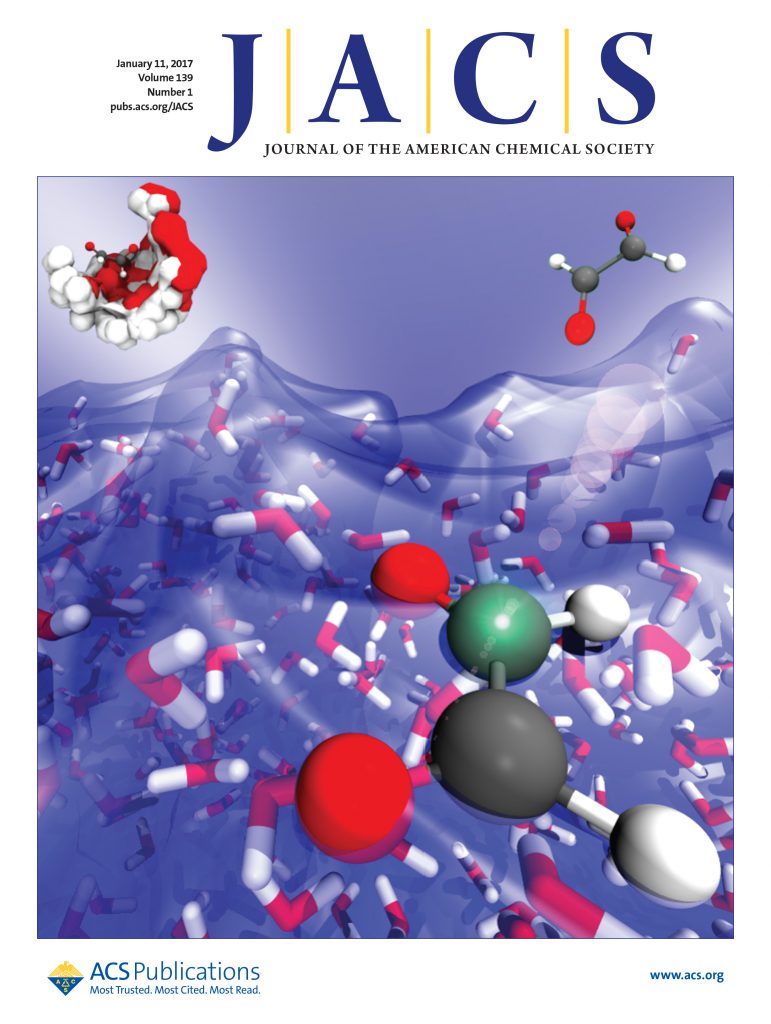Discovery of Ni(I) Complexes for CO2 Insertion Enabled by a Machine Learning-Computational-Selection Sequence.
IF 14.4
1区 化学
Q1 CHEMISTRY, MULTIDISCIPLINARY
引用次数: 0
Abstract
The fate of a catalyst or catalytic intermediate, i.e., its speciation, in situ is a critical aspect of the efficiency of a catalyst as well as the overall reactivity and selectivity of the catalyzed transformation. However, the precise factors that dictate catalyst speciation are rarely understood and trial-and-error approaches frequently prevail. To address this challenge and develop predictive tools to guide ligand selection for a desired metal speciation in a catalytically relevant context, we evaluated the feasibility of machine learning combined with computational activation barrier predictions to achieve CO2 insertion at room temperature for the sterically least hindered (and most vulnerable) Ni(I)-Ph complexes, which constitute key catalytic intermediates. Following an in depth computational rationalization on the origin of reactivity difference of Ni(I) versus Ni(II) toward CO2 insertion, we subsequently pursued machine learning to identify ligands that favor the critical Ni(I) oxidation state. To this end, a descriptor database was constructed in silico. Subsequent application of machine learning led to the prediction of numerous ligands that favor the more reactive Ni(I)-Ph intermediate and oxidation state, which were subsequently filtered for candidates that also show desired room temperature reactivity through the calculation of activation barriers. Ultimately, a set of representative candidates was synthesized and experimentally tested for CO2 insertion, confirming their reactivity and alignment with computational predictions. This work offers a blueprint for creating and analyzing virtual databases to predict ligands-including never synthesized ones-that control metal complex oxidation state, nuclearity, and reactivity.利用机器学习-计算-选择序列发现可插入CO2的Ni(I)配合物。
催化剂或催化中间体的命运,即其原位形态,是催化剂效率以及催化转化的总体反应性和选择性的关键方面。然而,决定催化剂种类形成的确切因素很少被理解,试错方法经常占上风。为了应对这一挑战并开发预测工具来指导在催化相关背景下所需金属物种的配体选择,我们评估了机器学习与计算激活势垒预测相结合的可行性,以实现在室温下对构成关键催化中间体的空间最小阻碍(和最脆弱)Ni(I)-Ph配合物的CO2插入。在对Ni(I)与Ni(II)对CO2插入的反应性差异的根源进行深入的计算后,我们随后进行了机器学习,以识别有利于Ni(I)临界氧化态的配体。为此,用计算机构造了一个描述符数据库。随后的机器学习应用预测了许多有利于更具活性的Ni(I)-Ph中间体和氧化态的配体,这些配体随后被过滤出来,通过计算激活势垒,也显示出所需的室温反应性。最后,合成了一组具有代表性的候选材料,并对其进行了CO2插入实验测试,证实了它们的反应性和与计算预测的一致性。这项工作为创建和分析虚拟数据库提供了蓝图,以预测控制金属络合物氧化态、核性和反应性的配体——包括从未合成的配体。
本文章由计算机程序翻译,如有差异,请以英文原文为准。
求助全文
约1分钟内获得全文
求助全文
来源期刊
CiteScore
24.40
自引率
6.00%
发文量
2398
审稿时长
1.6 months
期刊介绍:
The flagship journal of the American Chemical Society, known as the Journal of the American Chemical Society (JACS), has been a prestigious publication since its establishment in 1879. It holds a preeminent position in the field of chemistry and related interdisciplinary sciences. JACS is committed to disseminating cutting-edge research papers, covering a wide range of topics, and encompasses approximately 19,000 pages of Articles, Communications, and Perspectives annually. With a weekly publication frequency, JACS plays a vital role in advancing the field of chemistry by providing essential research.

 求助内容:
求助内容: 应助结果提醒方式:
应助结果提醒方式:


